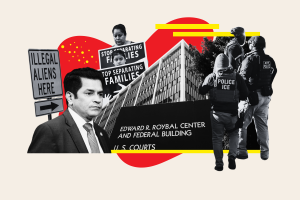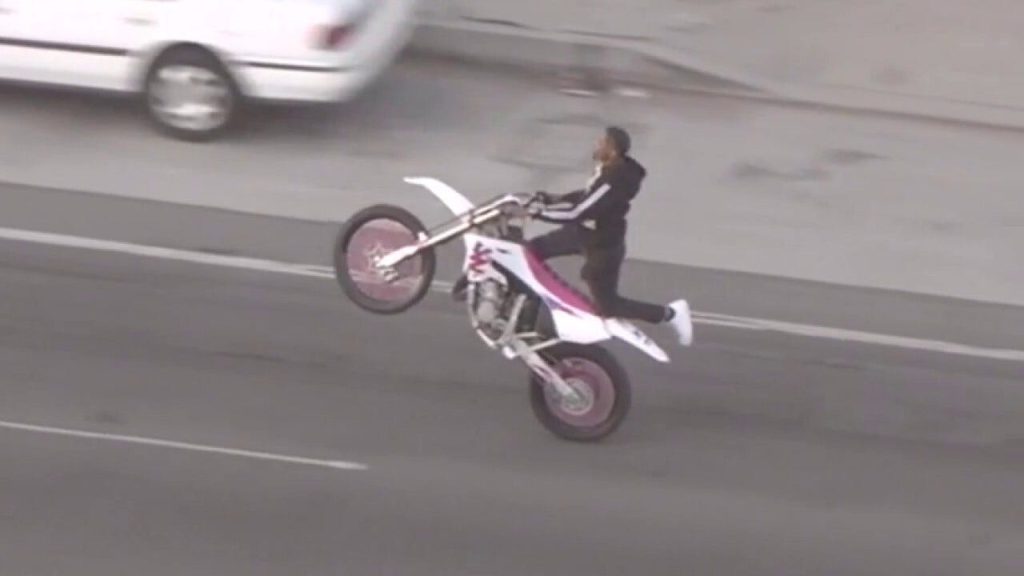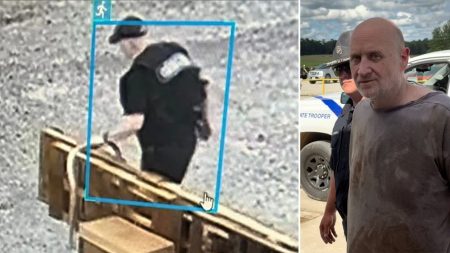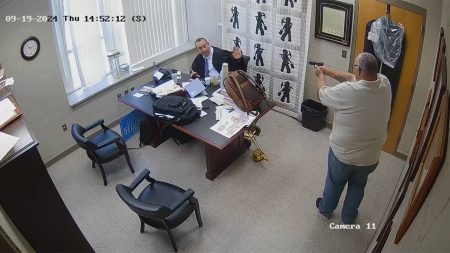The California Highway Patrol (CHP) engaged in a protracted pursuit of a group of dirt bike riders across Los Angeles County on Thursday afternoon. The incident began with two individuals on white and purple dirt bikes, clad in dark clothing, who allegedly instigated the chase. As the pursuit continued, these initial riders seemingly rallied additional riders via cellphone, swelling their ranks to approximately a dozen, many similarly attired and on comparable bikes. This impromptu assembly then embarked on a disruptive journey through various Los Angeles neighborhoods, including East Los Angeles, Inglewood, Mid-City, and Pico Union, demonstrating reckless behavior such as performing wheelies and driving against traffic. The chase, which lasted approximately 30 minutes, was ultimately terminated by law enforcement, though the primary suspects remain at large.
This incident underscores the growing concern surrounding illegal and reckless dirt bike and ATV riding in urban areas. These vehicles, often unregistered and uninsured, pose significant risks to public safety. Riders often disregard traffic laws, operate on sidewalks and in pedestrian zones, and engage in dangerous stunts, endangering themselves and others. The ease with which additional riders were summoned in this instance highlights the potential for such incidents to escalate rapidly, creating challenges for law enforcement. The use of cellphones to coordinate and perpetuate the chase adds another layer of complexity to the issue, demonstrating the need for effective strategies to address this type of organized reckless behavior.
The CHP’s decision to terminate the pursuit, while potentially frustrating for those seeking immediate apprehension of the riders, was likely influenced by several factors. High-speed chases, particularly involving multiple vehicles and unpredictable riders, can escalate into extremely dangerous situations for all involved – the pursuing officers, the fleeing suspects, and innocent bystanders. Balancing the need for apprehension with the preservation of public safety is a delicate calculation that law enforcement agencies must make in real-time. The ongoing historic wildfires in the Los Angeles area likely further complicated the decision, potentially diverting resources and increasing the risk of accidents in already strained conditions.
While the specific charges that initiated the pursuit remain unconfirmed, the riders’ behavior clearly violated numerous traffic laws and posed a substantial risk to public safety. The brazen nature of their actions, flaunting traffic regulations and seemingly encouraging others to join in the reckless behavior, suggests a disregard for the law and the safety of the community. The fact that this chase unfolded amidst the backdrop of historic wildfires adds another layer of concern, potentially highlighting a climate of lawlessness or disregard for authority in times of crisis.
This incident also raises questions about the effectiveness of current strategies for addressing illegal dirt bike and ATV riding. The prevalence of such activity in many urban areas suggests that current enforcement and preventative measures may be inadequate. Increased public awareness campaigns, stricter penalties for violations, and targeted enforcement operations could be considered as potential solutions. Additionally, community engagement and outreach programs could play a role in educating riders about the dangers associated with this type of behavior and promoting responsible use of off-road vehicles.
Ultimately, the CHP’s ongoing search for the two primary suspects underscores the need for a comprehensive approach to address this issue. Collaboration between law enforcement agencies, community organizations, and policymakers is crucial to developing effective strategies that promote public safety and deter reckless behavior on public roads. This incident serves as a reminder of the potential dangers posed by illegal and reckless dirt bike and ATV riding and the need for continued efforts to address this growing concern in urban areas.










